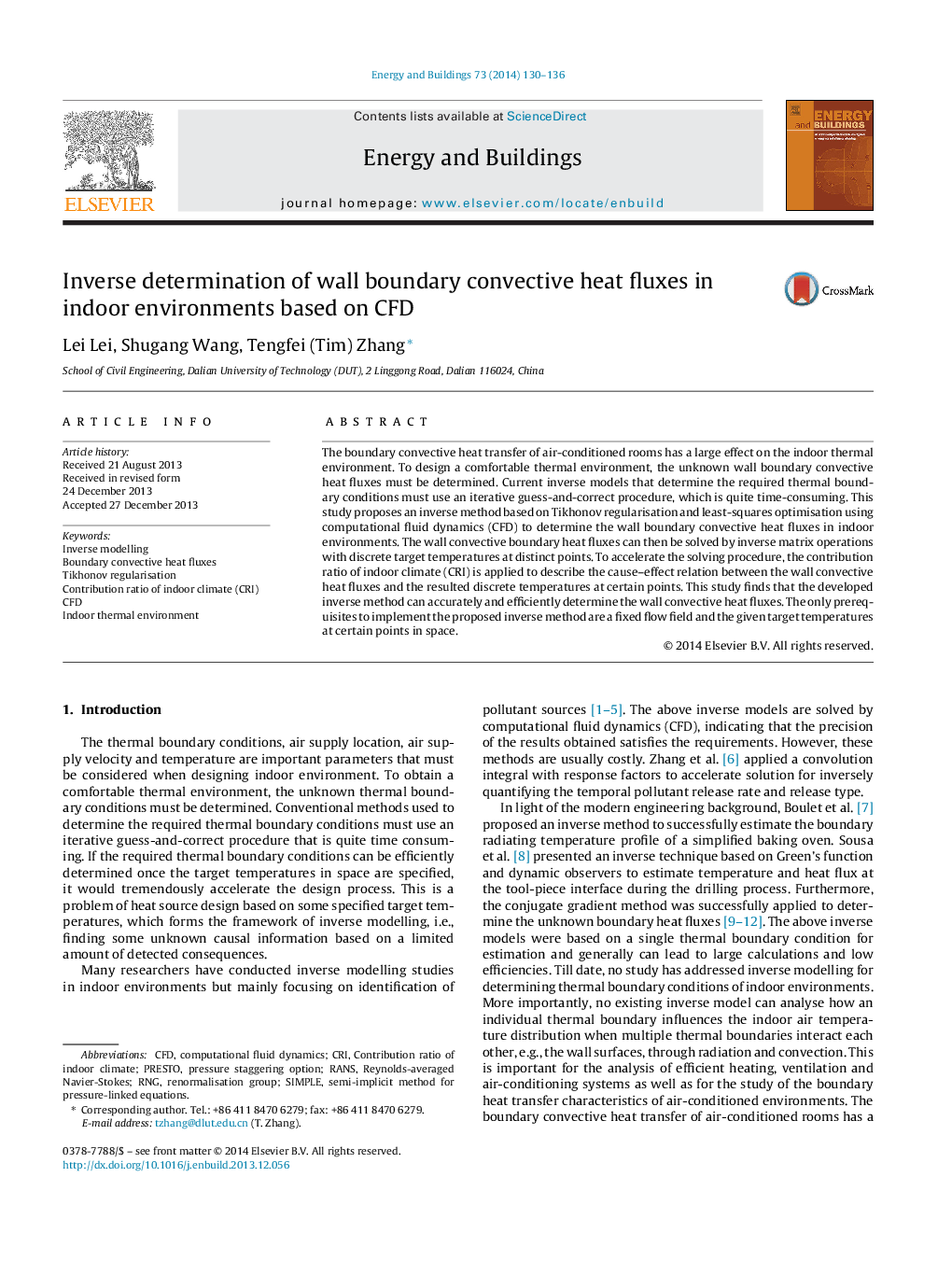| کد مقاله | کد نشریه | سال انتشار | مقاله انگلیسی | نسخه تمام متن |
|---|---|---|---|---|
| 262964 | 504058 | 2014 | 7 صفحه PDF | دانلود رایگان |

• An inverse strategy can be applied to determine the wall boundary convective heat fluxes to assign arbitrary target temperatures.
• Tikhonov regularisation coupled with least-squares optimisation is analysed.
• The contribution ratio of indoor climate (CRI) method is used to accelerate solution.
The boundary convective heat transfer of air-conditioned rooms has a large effect on the indoor thermal environment. To design a comfortable thermal environment, the unknown wall boundary convective heat fluxes must be determined. Current inverse models that determine the required thermal boundary conditions must use an iterative guess-and-correct procedure, which is quite time-consuming. This study proposes an inverse method based on Tikhonov regularisation and least-squares optimisation using computational fluid dynamics (CFD) to determine the wall boundary convective heat fluxes in indoor environments. The wall convective boundary heat fluxes can then be solved by inverse matrix operations with discrete target temperatures at distinct points. To accelerate the solving procedure, the contribution ratio of indoor climate (CRI) is applied to describe the cause–effect relation between the wall convective heat fluxes and the resulted discrete temperatures at certain points. This study finds that the developed inverse method can accurately and efficiently determine the wall convective heat fluxes. The only prerequisites to implement the proposed inverse method are a fixed flow field and the given target temperatures at certain points in space.
Journal: Energy and Buildings - Volume 73, April 2014, Pages 130–136